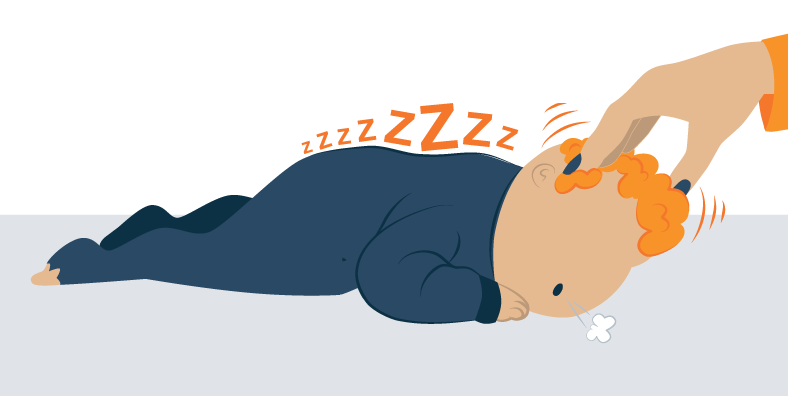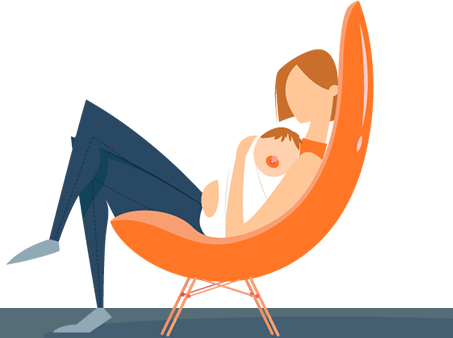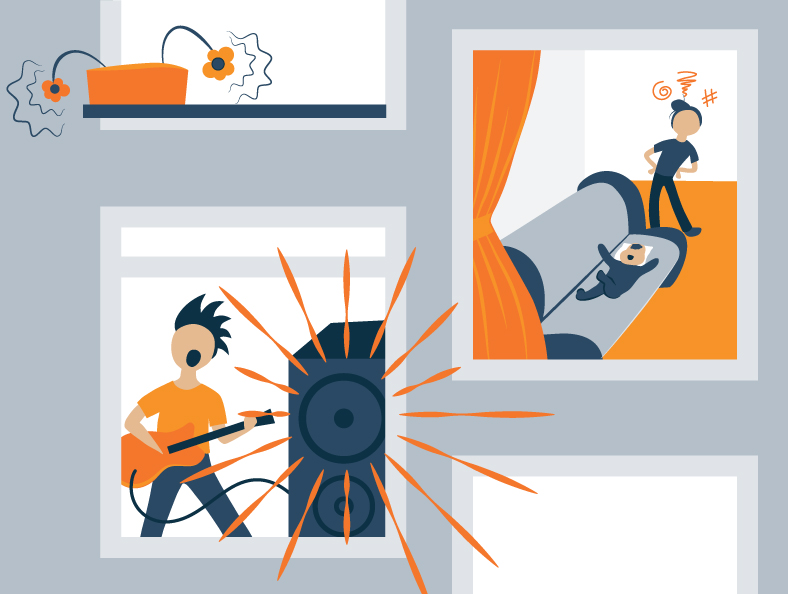When you have little ones, what’s the most precious time of day?
you guessed nap time, you’re right on the money.
As parents, we love naptime because it allows us to have some downtime to check items off our to-do list. It also means we can catch up on some much-needed sleep, too!
But what happens when our precious bundles aren’t taking long enough naps? Not only does it make planning our own schedules more difficult but it also robs young children of the restorative time they need for learning and development.
In this article, we’ll share our most helpful tips on how to get babies to nap longer, as well as answer your most frequently asked questions about how to improve babies’ daytime and nighttime sleep patterns.
Short Naps vs. Long Naps
There’s a distinct line between what constitutes a short nap versus a long one. Generally, shorter sessions are less than 45 minutes, and longer ones are more than 90 minutes. While one full sleep cycle lasts around 90 minutes in an adult, babies have shorter sleep cycles lasting only 50-60 minutes long—this is why a short nap is only one sleep cycle and a longer nap is two or more full cycles.
Every baby is different (obviously), but there are a few general rules to keep in mind that you can use as a guide to figure out if you’re letting baby sleep enough or making naptime rougher on yourself than it has to be.
The first thing to note is that it’s entirely normal for newborns to have erratic schedules when it comes to sleep. In the beginning, they may have day/night reversal, spending most of the day snoozing and wanting to be awake at night. Between one to three months of age, these rhythms start functioning properly, but regular sleep schedules still don’t emerge until around six months of age.
Infants aged 4-12 months need between 12-16 hours of sleep per day. This usually includes nighttime sleep and 2-3 naps per day—a short morning nap, a longer afternoon snooze, and catnap in the late afternoon. As they get older, they’ll begin to consolidate these daytime sleep episodes, and sometime between 12 to 18 months of age, they’ll naturally dwindle down to one long nap per day.
Benefits of Naps for Babies & Toddlers
Learning
Just like adults, babies’ brains use the time they spend asleep to process and consolidate information. Both children and adults have been found to perform better on tests after they take a nap. The same principle works for memory.
A study of 6- to 12-month-old babies found that when they were allowed to nap immediately after learning new information, they performed better cognitively on tests the next day. Even more compelling is that both the control and test group of infants both slept soundly the night before. The only measurable difference is that the babies who excelled in the tests had an hour plus napping session during the day.
Growth
Babies and toddlers are growing and developing rapidly. Have you ever thought it seemed like your little one grew an extra inch overnight?
To reach their full growth potential, babies need plenty of sleep. This includes regular and long daytime naps. The deep phases of sleep are where growth and tissue repair takes place. If your infant or toddler is getting only abbreviated napping sessions, they’re being deprived of this vital time to grow.
Behavior
Yes, a sleep-deprived child is a grumpy child. The same principle holds true for adults, so this revelation comes as no surprise. But if your infant is screaming and wailing in the middle of the supermarket, that’s not just a sign that they’re tired; it’s a signal that they’re over-tired.
Taking naps that aren’t long enough not only makes your child grumpier, but you’ll also find that they don’t react as strongly to happy events when they’re sleep-deprived. If you want to make sure you and your little infant enjoy life’s happy moments to their fullest, make long napping sessions a priority.
Rest
A rested child is a well-adjusted child. Remember, this world is new to your little one. Each day, they’re facing new environments, stimuli, and challenges that take mental energy to process and handle. By getting adequate rest during the day, you’ll find that the minor obstacles your baby faces during the day can become learning experiences that help them grow, rather than fodder for a meltdown.
Better Sleep at Night
Many new parents make the mistake of thinking that if they ensure their little one is extra tired at bedtime, it will make it easier to put them down to sleep. Ironically, the opposite is true. When a child is deprived of sleep during the day, they’re so overtired by night that they’ll be fussy, restless, and irritable.
The extra grumpiness they’re experiencing will make putting them down for bed a nightmare rather than a peaceful family bonding experience.
Tips for Longer Infant Naps
Know Your Baby’s Sleepy Cues
You’ll want to pay attention to both the clock and your baby’s signals. If your baby shows signs of being tired like yawning, rubbing their eyes or looking drowsy, it’s time for a nap. React quickly and put them in their designated sleeping spot, ideally their crib with no distractions like toys or blankets.
Within a short time, you’ll know your baby’s schedule and can begin to plan accordingly.
Regulate Your Baby’s Sleep Patterns
Babies have shorter sleep cycles of around 50-60 minutes, and they also spend more time in lighter sleep. This means they’re more prone to wake in the period when they’re transitioning from one sleep cycle to the next. Spend some time observing when your baby normally wakes to find out how long their sleep cycle is.
Once you know roughly the time your baby is prone to wake, you can help them successfully transition into the next cycle. The best way to do this is to stand next to their crib and gently pat their back or make “shushing” sounds when you notice them starting to rouse. After a few days, your infant should start making this transition into another sleep cycle without any help.
Create a Naptime Routine
Just like adults have bedtime routines that cue our bodies for bed, you can do the same for babies to help train them for sleep. Whether it’s a bedtime story, a cuddle session or changing into comfy loungewear, your infant will begin to associate these activities with sleep, which should make settling them in for naptime a breeze.
Get More Info: Babies Bedtime Routine
Prevent Factors that Might Wake Him Up
Loud noises, barking puppies, sirens, ringing phones, the doorbell or a blaring television, can all wreak havoc on a baby’s sleeping schedule. While you can’t ensure total silence, control what you can. Set your phone to silent or vibrate, close baby’s bedroom door (use a baby monitor) and keep the room at a comfortable temperature to ensure the most prolonged, uninterrupted sleep possible.
Offer a Snack or Meal Before Nap Time
Babies and toddlers are growing rapidly, and at times, it seems like their stomach is a bottomless pit. Seriously, where does all that food go?
If your child is hungry, they’re probably not going to be able to fall asleep—and even if they do manage to fall asleep, a hunger pain or growling tummy can wake them up prematurely. Try to provide a small snack before naptime and give them time to digest before laying them down.
Avoid Screen Time
Tempting as it may be to let them watch a cartoon on an iPad or television, you should avoid any screen time before a nap. Their young minds are very active, and this stimulus is likely to keep them awake even after you switch the button to off.
Learn More: The Link Between TV and Children’s Sleep Habits
Introduce White Noise
If your home is incredibly noisy (your baby’s three o’clock naptime may be when the high schoolers from next door decided it’s time for band practice in the garage), you’ll want something to drown out the noise. A white noise machine could be just the trick. Plus, it makes a whooshing sound that is reminiscent of baby’s time in the womb.
Balance Between Noise & Silence
You don’t want a heavy metal band performing in your living room, but complete silence isn’t the answer, either. The last thing you need is a baby that’s trained to sleep only when it’s quiet. The best thing to do is to be mindful of your noise levels, but strive for some degree of background noise throughout the home.
Balance Between Light & Dark
Bright lights and sunshine can keep your baby awake, but total darkness could make the transition from sleeping to waking disorienting. A dim room with drawn curtains that let a touch of light in is an ideal balance to keep your little one’s circadian rhythm in sync.
Frequently Asked Questions
When do babies start taking longer naps?
Every baby is different, but you’ll start to notice longer napping episodes start to happen between the four- and six-month mark. If your baby is older than six months and still waking up after 30- to 45-minute napping episodes, it’s time to employ some of the sleep hacks we mentioned in this article.
What to do when my baby wakes early from a nap?
First, gauge whether your little one is fully awake or still a bit drowsy. If they’re fully awake, then trying to force them back to sleep isn’t going to make you or your child happy. However, if they’re still a bit drowsy, you may be able to soothe them back to their dreamland. Rocking them or holding them until they begin to doze and putting them back in their crib is one option.
You may need to darken the room, adjust the temperature, or offer a pacifier.
If your little one has peed through the diaper and needs to be changed, you can attempt to put them back down after a change, but be prepared for them to be awake and alert.
Find Out More: How to Get Babies to Nap Longer
Where should my baby nap during the day?
Ideally, your baby should rest in the same place during the day that they sleep at night. Otherwise, sleep training becomes that much more difficult. Resist the temptation to let them fall asleep in a swing. Once they start to doze, move them to their regular sleeping place.
An occasional nap in a stroller or car seat isn’t the worst thing in the world, but making it a habit will cause sleep time to be more difficult at night.
How many naps does my baby need?
Once your baby is six months old, you’ll find that they need about two to four longer naps per day. Before that, they should sleep more frequently and for shorter durations. Once your little one has reached 12 months of age, you can begin consolidating them, and by the time they’re 18 months old, you should be down to one per day.
Again, these are general rules. Remember that every child is different. Please consult with your pediatrician if you have further concerns.
Read More: How Much Sleep Do Kids Need?
Conclusion
Okay, parents, you’ve got this! Even though your baby’s sleep patterns may seem like a mystery, especially since they can’t talk yet and tell you what’s on their mind, now that you know the best practices, you’ll find that things get easier. Also, over time you and your baby will begin to develop a routine that will be comfortable for both of you. Hang in there!
Sources and References:
Jill Zwarensteyn
Editor
About Author
Jill Zwarensteyn is the Editor for Sleep Advisor and a Certified Sleep Science Coach. She is enthusiastic about providing helpful and engaging information on all things sleep and wellness.
Combination Sleeper






